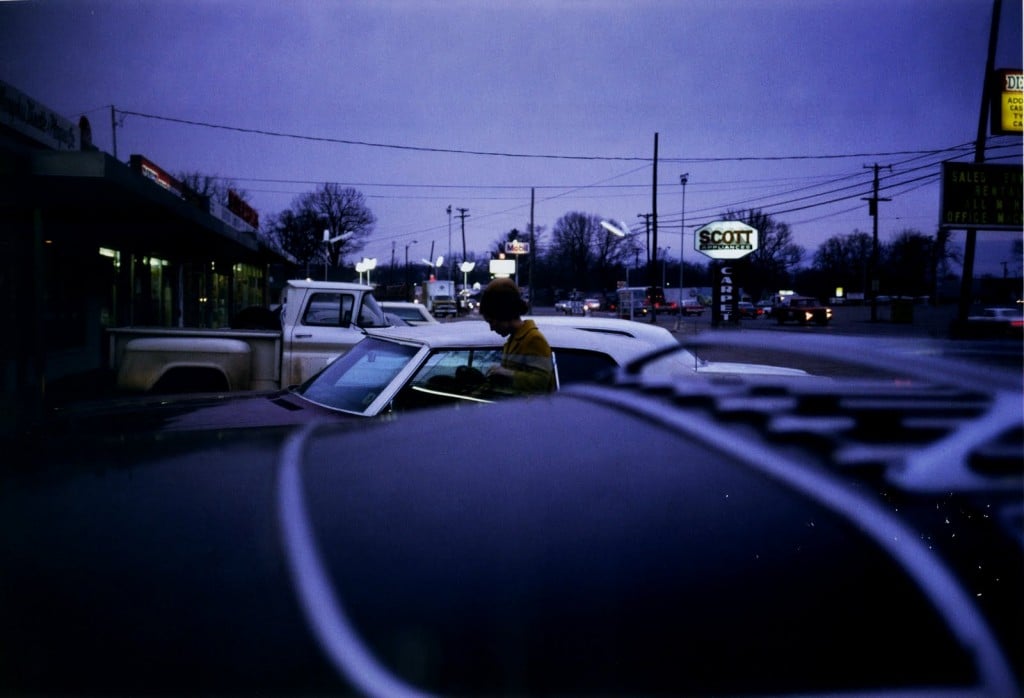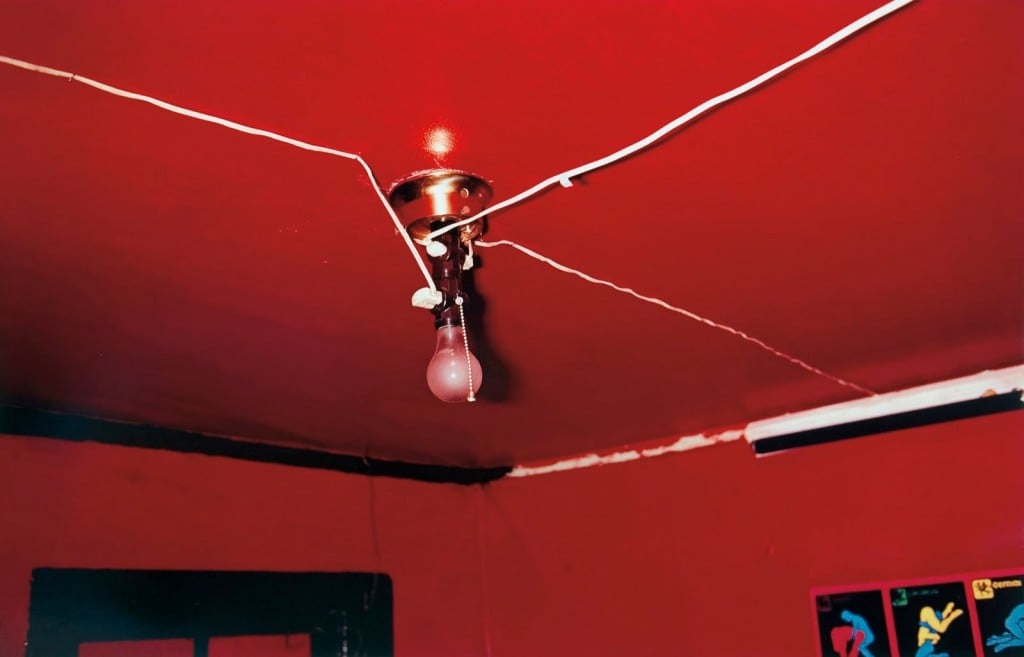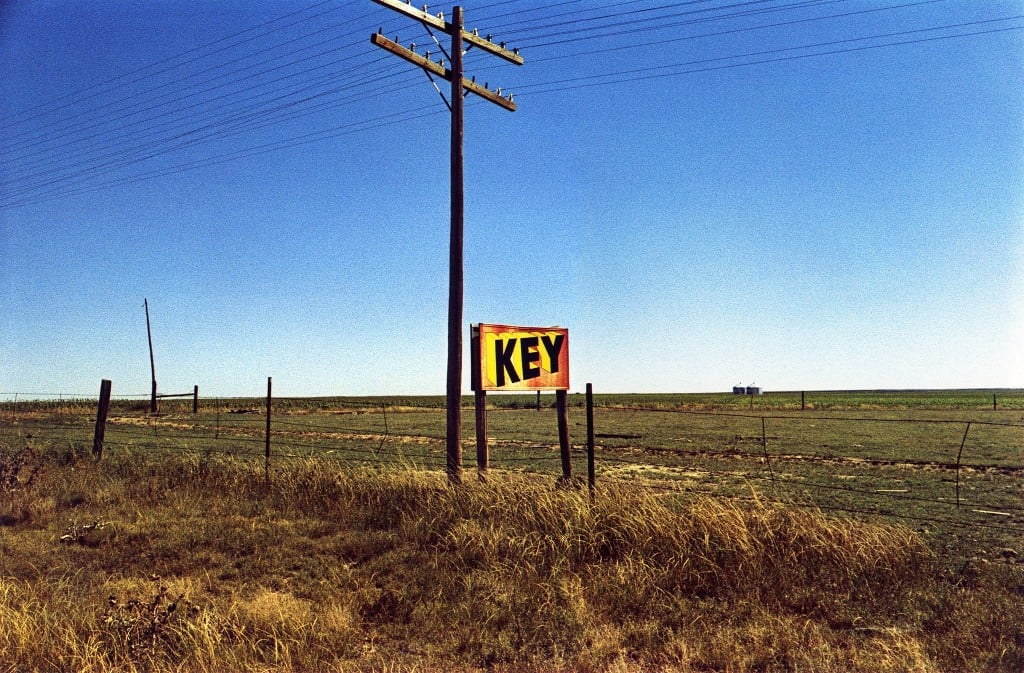Pop with a Shotgun (10)
By:
July 24, 2015
[Between October 2005 and June 2009, HiLobrow contributor Devin McKinney worked with intermittent perseverance and passion to record his reactions to music and music-related stimuli at a blog called Pop with a Shotgun. He has selected some of his favorite posts for this reprint series. This installment, originally posted December 27, 2006, is the last of ten.]
*
I’m alive

MICHAEL ALMEREYDA (writer-director)
William Eggleston in the Real World
In a few weeks we’ll be making our first trip to Memphis. So we watched with particular interest this 2005 documentary about Eggleston, the photographer-eccentric who has made Memphis his home for many years, and whose boldly colored, intensely vibrant shots of bottles, plants, cars, empty lots, sloping roofs, shadows on walls, and the profiles and backs of people with baroque hairstyles have been taken mostly in and around the city where Elvis, Martin Luther King, and Arthur Lee died.
Eggleston has at least a couple of solid rock and roll connections: one of his photos adorned the cover of Radio City (1974), Big Star’s second album; and in the mid-Eighties he did a series of photos inside Graceland, making all its tacky gold and gaudy velvet fairly vibrate in the frame, like shots from the chambers of a tomb whose king was imprisoned within but still alive, who had just a second ago stepped out of the shot, leaving his presence behind.

Early in the film Eggleston — a mumbling nonentity of a man, shuffling and self-absorbed, though it may be partly an act, you know those artistic types — was seeking bandages in a Kentucky drugstore, asking the druggist’s counsel; and over the loudspeaker was playing, bless the music of chance, “Love Me Tender.” Nice. Elvis; Memphis; druggist, help me, I’m hurt. Tenderness. Nice.
But the movie’s weird sense of music continued, snippets piling up to the point I had to start scribbling a list. Behind one scene Charlie Rich’s “The Most Beautiful Girl in the World” played on a nearby turntable; and then it skipped, and as Eggleston sat hunched over his colored pencils, oblivious, the skip threatened to go on forever: – to see the most beautiful girl, that walked — that walked — that walked — that walked — that walked — that walked — that walked — that walked — that walked — that walked — that walked — that walked — that walked — that walked — that walked — that walked —
There was footage shot by Eggleston with a prehistoric video camera in Memphis in 1974, around the time Big Star came to him for his cover shot of a fire-red ceiling, lone light bulb and perpendicular white wires. Eggleston’s trick as a videographer is to get the camera as far up the noses and into the pores of his friends and family as he can. Faces loom bloodless and shiny. “You’re a posing asshole, Eggleston,” one friend says, humorlessly. “A mirror would be better.” The music playing in the room is Cat Stevens, “The Wind.”
The movie ends and the credits come up. Roy Orbison is singing a song from his last album, 1989’s Mystery Girl, a beautiful Orbisonesque song called — hey! — “In the Real World.” Extra-sibilant sssss’s on the quiet intro, as if Roy has removed his bridgework and is singing tooth to gum. Then the band kicks in, that full, tragic Orbison sound. End credits, white over black. So beautiful. It would be enough for the film to end there. But it doesn’t.

After credits, we cut to video of Eggleston with his eyes closed. We watch; the music continues. We realize Eggleston is listening to the Orbison song we’ve been hearing: it is being played for him by a friend, a friend we’ve seen earlier in the film ranting about cancer, and who, we’ve been told, is now dead, though not from cancer. Eggleston listens to Orbison, fellow adoptee of Memphis, who made his first great sides at Sun Studios; Eggleston listens, eyes shut tight.
“So beautiful,” he says. He’s hearing this for the first time. He appreciates; he knows. “So beautiful.”
Again: it would be enough for the film to end there. Again: it doesn’t.
Eggleston and his dead friend start to talk about how lucky they are. How lucky we are, to be alive.
That’s it, Eggleston says. You said it, right there.
No, the dead friend insists, no, no, no. We’re lucky to be alive now.
Why — ?
Because they didn’t have Roy Orbison in the Middle Ages.
2:52 a.m., Wednesday, December 27, 2006, standing on the verge of who knows what.
Like the dead friend said, we’re lucky to be alive now.
***
CURATED SERIES at HILOBROW: PINAKOTHEK by Luc Sante | ALL MY STARS by Joanne McNeil | INTO THE VOID by Charlie Jane Anders | WE REABSORB & ENLIVEN by Matthew Battles | BRAINIAC by Joshua Glenn | COMICALLY VINTAGE by Comically Vintage | BLDGBLOG by Geoff Manaugh | WINDS OF MAGIC by James Parker | MUSEUM OF FEMORIBILIA by Lynn Peril | ROBOTS + MONSTERS by Joe Alterio | MONSTOBER by Rick Pinchera | POP WITH A SHOTGUN by Devin McKinney | FEEDBACK by Joshua Glenn | 4CP FTW by John Hilgart | ANNOTATED GIF by Kerry Callen | FANCHILD by Adam McGovern | BOOKFUTURISM by James Bridle | NOMADBROW by Erik Davis | SCREEN TIME by Jacob Mikanowski | FALSE MACHINE by Patrick Stuart | 12 DAYS OF SIGNIFICANCE | 12 MORE DAYS OF SIGNIFICANCE | 12 DAYS OF SIGNIFICANCE (AGAIN) | ANOTHER 12 DAYS OF SIGNIFICANCE | UNBORED MANIFESTO by Joshua Glenn and Elizabeth Foy Larsen | H IS FOR HOBO by Joshua Glenn | 4CP FRIDAY by guest curators
